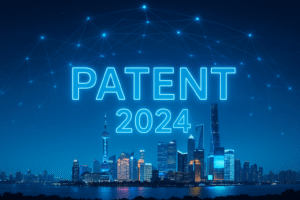HPCL-Mittal Energy Ltd (HMEL) has reached a major milestone in the oil and gas sector. The company recently won three key patents. Alongside, it introduced the world’s first dual-transport crude pipeline pigs.
Pipeline pigs are tools used inside pipelines for cleaning and inspection. HMEL’s innovation allows these pigs to transport and manage two different crude oil types simultaneously in the same pipeline.
What Makes Dual-Transport Pipeline Pigs Unique?
Unlike traditional pigs, HMEL’s dual-transport pigs have advanced sensing and navigation systems. These features help clean pipelines and inspect them while carrying two different crude grades separately.
This technology boosts pipeline efficiency. It reduces the need for multiple pipelines and lowers operating costs. Plus, it ensures safer and smoother crude transport.
Details of the Three Patents
HMEL’s patents cover critical innovations:
The design of the dual-transport pig system
The sensor and navigation technology inside the pigs
The process for switching between crude types during transport
These patents secure HMEL’s leadership in pipeline technology and protect their intellectual property.
Benefits of This Innovation
This new system offers several advantages:
Operational efficiency: Handle multiple crude grades in one pipeline
Cost savings: Reduce the need for cleaning and extra pipelines
Enhanced safety: Automated sensors reduce manual checks and risks
HMEL’s Innovation Journey
HMEL is a joint venture between Hindustan Petroleum Corporation Ltd and Mittal Energy Ltd. The company has been focusing on innovation and growth in recent years.
In 2024-25, HMEL achieved record polymer sales of over 2 million tonnes. The company also won two prestigious awards at the Asian Oil & Gas Awards 2024, highlighting its commitment to safety and sustainability.
Industry Impact and Future Plans
Experts see this patent and technology as a game-changer for pipeline operations globally. The ability to transport multiple crude grades safely in a single pipeline could reduce costs and increase flexibility for many operators.
HMEL plans to deploy this technology on its 1,017 km pipeline running from Gujarat to Punjab. There are also plans to license this innovation to other companies worldwide.
Further research and development will focus on integrating AI, digital tools, and green energy technologies like hydrogen.
Conclusion
HMEL’s breakthrough with the dual-transport crude pipeline pigs and three patents marks a key advance in pipeline engineering. This innovation promises greater efficiency, cost-effectiveness, and safety in crude oil transport.
As the energy industry evolves, HMEL is positioning itself as a leader in cutting-edge technology and sustainable practices.
Pipeline pigs are tools used inside pipelines for cleaning and inspection. HMEL’s innovation allows these pigs to transport and manage two different crude oil types simultaneously in the same pipeline.
What Makes Dual-Transport Pipeline Pigs Unique?
Unlike traditional pigs, HMEL’s dual-transport pigs have advanced sensing and navigation systems. These features help clean pipelines and inspect them while carrying two different crude grades separately.
This technology boosts pipeline efficiency. It reduces the need for multiple pipelines and lowers operating costs. Plus, it ensures safer and smoother crude transport.
Details of the Three Patents
HMEL’s patents cover critical innovations:
The design of the dual-transport pig system
The sensor and navigation technology inside the pigs
The process for switching between crude types during transport
These patents secure HMEL’s leadership in pipeline technology and protect their intellectual property.
Benefits of This Innovation
This new system offers several advantages:
Operational efficiency: Handle multiple crude grades in one pipeline
Cost savings: Reduce the need for cleaning and extra pipelines
Enhanced safety: Automated sensors reduce manual checks and risks
HMEL’s Innovation Journey
HMEL is a joint venture between Hindustan Petroleum Corporation Ltd and Mittal Energy Ltd. The company has been focusing on innovation and growth in recent years.
In 2024-25, HMEL achieved record polymer sales of over 2 million tonnes. The company also won two prestigious awards at the Asian Oil & Gas Awards 2024, highlighting its commitment to safety and sustainability.
Industry Impact and Future Plans
Experts see this patent and technology as a game-changer for pipeline operations globally. The ability to transport multiple crude grades safely in a single pipeline could reduce costs and increase flexibility for many operators.
HMEL plans to deploy this technology on its 1,017 km pipeline running from Gujarat to Punjab. There are also plans to license this innovation to other companies worldwide.
Further research and development will focus on integrating AI, digital tools, and green energy technologies like hydrogen.
Conclusion
HMEL’s breakthrough with the dual-transport crude pipeline pigs and three patents marks a key advance in pipeline engineering. This innovation promises greater efficiency, cost-effectiveness, and safety in crude oil transport.
As the energy industry evolves, HMEL is positioning itself as a leader in cutting-edge technology and sustainable practices.




